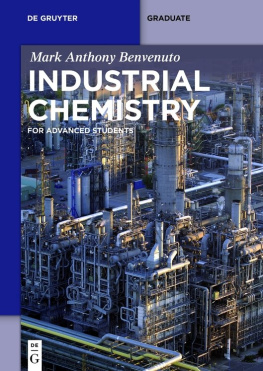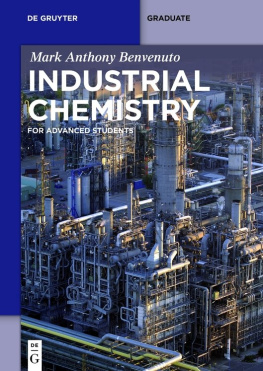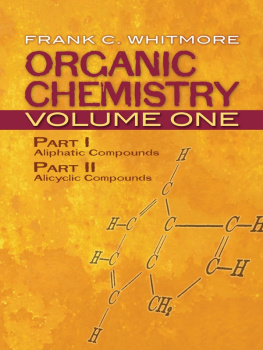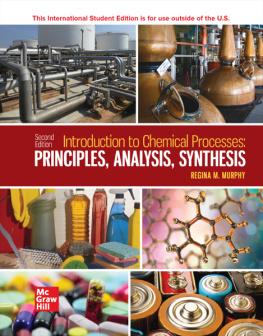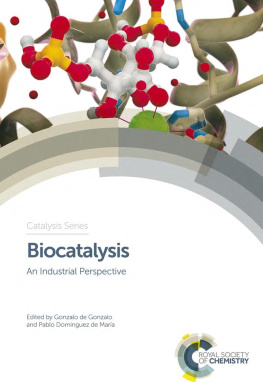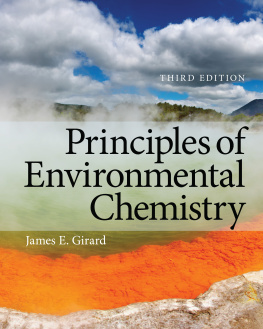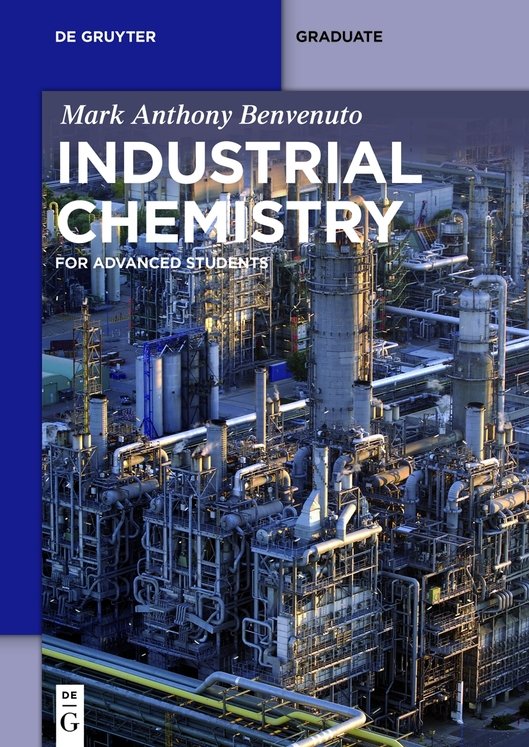Over 70,000 chemicals are produced annually on a large scale and are either used in some further chemical transformation, or are incorporated into an end product. Perhaps obviously, nothing short of an exhaustive encyclopedia could discuss all of them, or even list all their uses. Some focus is required in order to cover a selected series of topics within this extensive, broad field.
Similarly, it would be difficult to produce a volume that simply lists a series of chapters corresponding to the largest commodity chemicals used in the world today which were left out of Industrial Chemistry , because such a laundry list does little to place any of these chemicals and materials in a larger context. This book will attempt to discuss the large process chemistry omitted in the initial volume and will also build greater context among the processes. Thus, while there are chapters on chemicals that are certainly organic those that are only produced from the refining of crude oil as well as on those that are distinctly inorganic, there are also several chapters that straddle borders, such as hydrogen peroxide, food additives, bromine, fluorine, and asphalt.
Most developed nations track self-determined lists of materials that are deemed vital to their economies and defense. For example, in the United States, the Department of Energy maintains a Critical Materials Strategy (Department of Energy , 2014), the Department of Defense has published a Strategic and Critical Materials 2013 Report on Stockpile Requirements (Department of Defense, 2014), and the United States Geological Survey produces a Mineral Commodities Summary each year (United States Geological Survey, 2014). These reports indicate the quantities of various chemicals that are produced annually and how much the United States imports from other nations. Similar documents are produced by the ministries of defense, education, and economic growth in most European and Pacific nations. In addition to these, several national and internationally learned societies keep track of chemical and material production, and usually publish their own lists and compilations of statistics regarding them (Chemical and Engineering News, 2014; Royal Society of Chemistry, 2014; European Chemical Industry Council, 2014; Society of Chemical Manufacturers and Affiliates, 2014; Gesellschaft Deutscher Chemiker, 2014; Chemical Society of Japan, 2014; Royal Australian Chemical Institute, 2014; International Union of Pure and Applied Chemistry, 2014). Also, trans-national organizations like the United Nations and the Arctic Economic Council monitor chemical production and industrial use in their annual reports and in more targeted documents (United Nations Environment Programme, 2012; United Nations Environmental Programme, 2014; Arctic Council, 2014).
The chemicals and materials in these chapters are not always produced on a large enough scale that they make it on to any top 100 list of the above-mentioned organizations. But each material is vitally important in some way, and thus is worthy of discussion. Therefore, we have tried to include many of them in this book.
1.2 Recycling
There is no doubt that the chemical industry today has been greatly transformed from the industry of the 1960s. It has been noted that from 1945 to perhaps 1965, the generation that had fought the single largest war humanity had ever seen returned home and built a society and a quality of life that had also never been seen before. The infrastructure in the countries that had been embroiled in that war expanded greatly, which meant the use of millions of tons of refined metals, concrete, asphalt, glass, and petroleum products the latter was in part for the fuels for the vehicles that made this all happen. Highways were constructed, cities built or rebuilt and water and energy infrastructures were put in place or replaced. All of this required massive amounts of chemicals and all of it generated waste.
The developed world has changed since that time. Now there is recognition that this level of man-made change has affected the world itself. While debate continues over resource depletion, climate change, the first priority use of arable land and the pollution of fresh and salt waters, the chemical industry has adapted and has moved toward cleaner, more environmentally benign practices for many of the production streams that manufacture and refine the chemicals we use today.
A part of each chapter in this book has been devoted to the concept of recycling and reuse of the material upon which it focuses. When no recycling or reuse is possible, this is acknowledged. But when some process has been improved, made safer, or made economically more sound through the practices of good stewardship on the part of producers, including recycling or reuse, that too is also acknowledged.
Bibliography
Arctic Council. Website. (Accessed 7 June 2014, as: http://www.arctic-council.org/index.php/en/arctic-economic-council ).
Chemical & Engineering News. Website. (Accessed 5 June 2014, as: http://cen.acs.org/index.html ).
Chemical Society of Japan. Website. (Accessed 5 June 2014, as: https://www.csj.jp/index-e.html ).
Department of Defense. Strategic and Critical Materials 2013 Report on Stockpile Requirements. Website. (Accessed 7 June 2014, as: http://mineralsmakelife.org/assets/images/content/resources/Strategic_and_Critical_Materials_2013_Report_on_Stockpile_Requirements.pdf ).
Department of Energy. Critical Materials Strategy. Website. (Accessed 7 June 2014, as: http:/energy.gov/sites/prod/files/DOE_CMS2011_FINAL_Full.pdf ).
European Chemical Industry Council. Website. (Accessed 20 May, 2014, as: http://www.cefic.org ).
Gesellschaft Deutscher Chemiker. Website. (Accessed 5 June 2014, as: https://www.gdch.de/home.html ).
International Union of Pure and Applied Chemistry, IUPAC. Website. (Accessed 5 June 2014, as: http://www.iupac.org/ ).
Royal Australian Chemical Institute, RACI. Website. (Accessed 5 June 2014, as: http://www.raci.org.au/ ).
Royal Society of Chemistry. Website. (Accessed 5 June 2014, as: http://www.rsc.org ).
Society of Chemical Manufacturers and Affiliates. Website. (Accessed 5 June 2014, as: http://www.socma.com/ ).
United Nations Environment Programme 2012 Annual Report. Website. (Accessed 7 June 2014, as: http://www.unep.org/gc/gc27/docs/UNEP_ANNUAL_REPORT_2012.pdf ).
United Nations Environmental Programme Costs of Inaction on the Sound Management of Chemicals, Website. (Accessed 7 June 2014, as: http://www.unep.org/chemicalsandwaste/Portals/9/Mainstreaming/CostOfInaction/Report_Cost_of_Inaction_Feb2013.pdf ).
United States Geological Survey. Mineral Commodities Summary 2013. Website. (Accessed 7 June 2014, as: http://minerals.usgs.gov/minerals/pubs/mcs/2013/mcs2013.pdf ).
2 Phosgene (carbonyl dichloride)
chlorine, have been considered one of the worst of battlefield weapons, namely, poison gas.
Elemental chlorine gas was indeed the first chemical warfare agent widely used on the western front of the First World War. Although the gas is poisonous, at the concentrations that were delivered by artillery in that war, it was seldom lethal by itself. It is denser than air, thus seeping and pouring into the trenches, forcing soldiers without gas helmets to rise up for air, where enemy soldiers could then shoot at them. Phosgene, used later in the war, was far more lethal. When inhaled even in small amounts, HCl forms in the lungs, affecting what is called dry land drowning as lung tissue was destroyed. The limited number of survivors of phosgene attacks claim that small doses of it smell like newly mown hay, or fresh-cut wheat.

